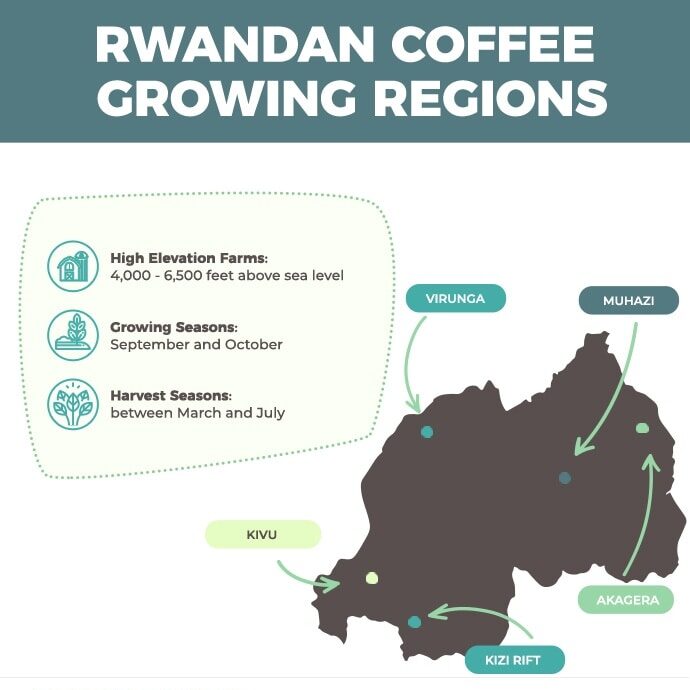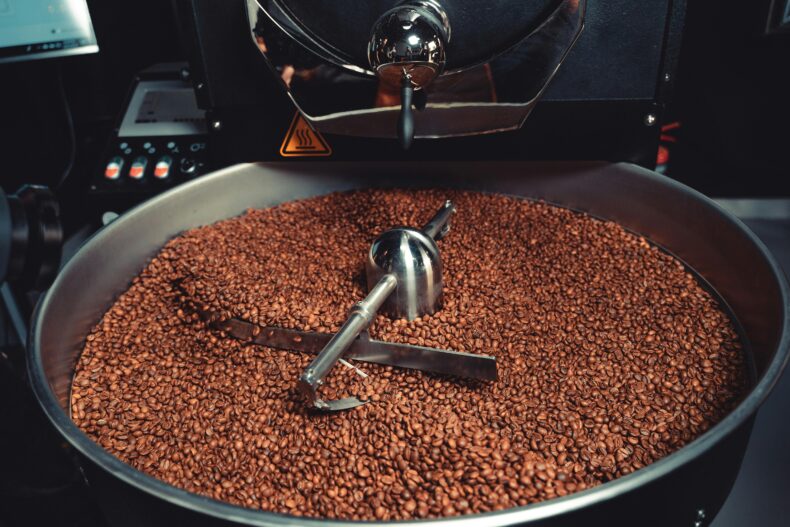
At first glance, those Rwanda coffee beans on that shop counter might look like just another bag ‘a beans with a missing vowel in its name.
But the history of the Rwandan coffee industry, both tragic and epic, has not only kept coffee production from the Land of a Thousand Hills alive – it’s transformed it into one of the most sought-after coffees in the modern world.
A Brief History Of Rwandan Coffee
The tiny, landlocked East African nation of Rwanda is nestled in the middle of the continent and located not far from Kenya, one of the world’s leading coffee-growing nations.
The first coffee plants reached Rwanda as late as the beginning of the 20th century, but it was another three decades before Rwanda coffee production began to take off.
Initially, while the quantity was there, the quality was still lacking. The types of coffee beans grown in Rwanda were rather low-grade, particularly due to the harsh demands of the colonial government before the country gained independence in the middle of the century.
Did you now?
The first coffee plants were brought to Rwanda by German missionairs in the early 1900s, but i took 3 decades before the coffee production took off.
Even after independence, the coffee industry suffered (1) as crises struck both the coffee world (2) and Rwanda (3) in the 1990s, and by the turn of the millennium, the industry was in shambles.
But the farmers didn’t give up the metaphorical coffee ghost, and instead started turning to the world of high-end coffees. A National Coffee Strategy (4) was developed that reinvented their coffee industry.
In the last two decades since, Rwanda has grown into one of the top thirty largest coffee-growing countries in the world.
Rwanda coffee exports now generally figure in the dozens of millions of pounds per year – that is, when production isn’t being tampered with by issues within the country. The bulk of this production comes from small farms rather than larger estates.
Growing Coffee In Rwanda

Most of the plantations in the country are fairly high, and are usually situated somewhere between 4,000 and 6,500 feet above sea level. This gives the coffee plants a nice, high altitude to grow in that is perfect for producing excellent beans (5).
Of all these farms, 95% have coffee plants that are not just Arabica – they are of the highest quality Rwanda bourbon coffee variety.
The local growing season typically begins in either September or October and continues until harvesting takes place between March and July. Within those months, the harvesting tends to peak from May on.
References
- The History of Rwandan Coffee & The Story Behind Epiphanie Muhirwa | Perfect Daily Grind Retrieved from https://perfectdailygrind.com/2015/04/the-history-of-rwandan-coffee-the-story-behind-epiphanie-muhirwa/
- The Coffee Crisis — Coffee & Conservation Retrieved from https://www.coffeehabitat.com/2006/02/the_coffee_cris/
- Violence erupts in Rwanda, foreshadowing genocide of 800,000 – HISTORY Retrieved from https://www.history.com/this-day-in-history/civil-war-erupts-in-rwanda
- Coffee Strategy Retrieved from https://www.naeb.gov.rw/index.php?id=49
- Rwanda Coffee https://www.homegrounds.co/rwanda-coffee/



